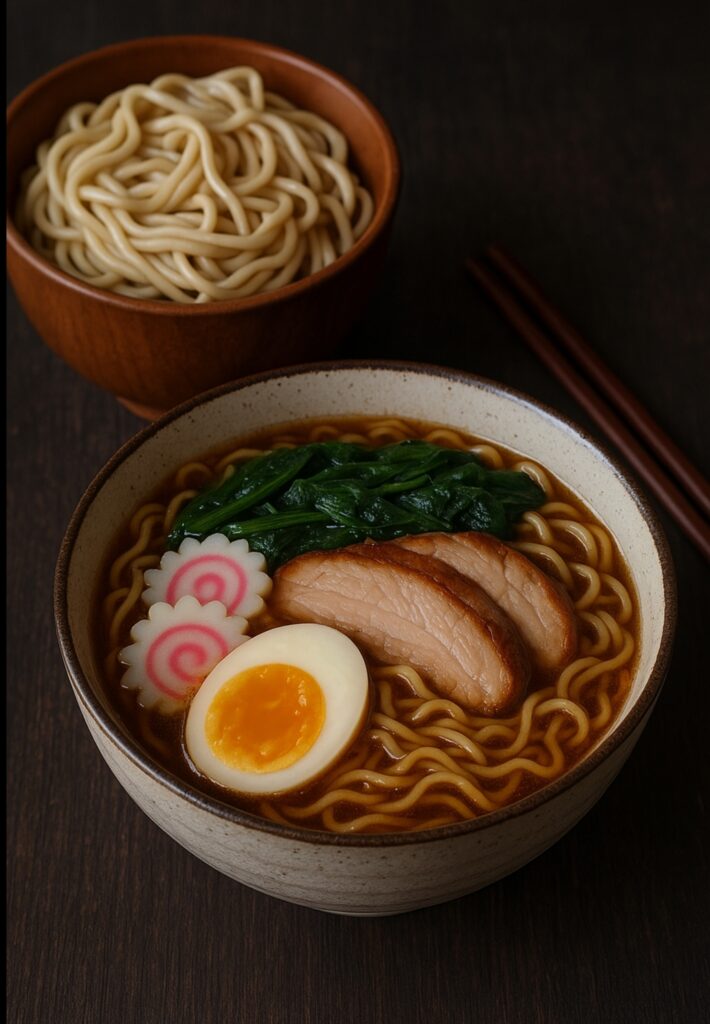Ramen is one of Japan’s most beloved comfort foods, with a rich umami broth, springy noodles, and a variety of flavorful toppings. However, this iconic dish did not originate in Japan. Instead, ramen traces its roots to China, where its ancestor, lāmiàn (拉面), has been made for centuries. The journey from Chinese street food to a Japanese national obsession is a fascinating tale of cultural exchange, adaptation, and culinary innovation.
Origins: The Chinese Influence
Lāmiàn, meaning “pulled noodles,” is a traditional Chinese noodle dish made by stretching and folding dough repeatedly until it forms long, thin strands. These noodles are typically served in a light broth, often accompanied by beef or other proteins. Unlike ramen, which relies on kansui (alkaline water) to achieve its signature chewy texture, Chinese lāmiàn is made solely through the stretching technique.
During the late 19th and early 20th centuries, Chinese immigrants brought their noodle-making traditions to Japan. Many of them settled in port cities like Yokohama and Kobe, opening small food stalls that served wheat-based noodles in a simple broth. This dish was initially referred to as Shina soba (支那そば), meaning “Chinese soba,” which later evolved into the term “ramen.”
The Birth of Japanese Ramen
As ramen gained popularity in Japan, it underwent significant transformations. One of the most crucial adaptations was the incorporation of kansui, a mineral-rich alkaline water that gives ramen noodles their distinct elasticity and slightly yellow hue. This ingredient, originally discovered in Mongolian lakes, became a defining characteristic of Japanese ramen.
Over time, Japanese chefs experimented with different broth bases, incorporating local ingredients and regional flavors. This led to the development of various ramen styles, including:
- Shoyu (Soy Sauce) Ramen – Originating in Tokyo, this broth is clear and savory, made with soy sauce and chicken or pork-based stock.
- Miso Ramen – A Hokkaido specialty featuring a rich, fermented soybean paste broth, often paired with butter and corn.
- Tonkotsu (Pork Bone) Ramen – Developed in Kyushu, this style boasts a creamy, opaque broth made from slow-simmered pork bones.
- Shio (Salt) Ramen – The lightest and clearest of the broths, typically seasoned with sea salt and seafood-based stock.
Ramen’s Global Expansion
By the mid-20th century, ramen became a staple of Japanese cuisine, particularly with the rise of instant ramen in 1958, invented by Momofuku Ando. His creation revolutionized convenience food, making ramen accessible worldwide. Today, ramen shops can be found in nearly every corner of the globe, with chefs continually innovating by incorporating fusion elements and modern twists.
Despite its evolution, ramen remains deeply tied to its Chinese roots. While Japan has transformed ramen into a national dish, its origins in Chinese lāmiàn serve as a reminder of how culinary traditions transcend borders and evolve through cultural exchange.
A Chinese Legacy in a Japanese Dish
From its humble beginnings as Chinese pulled noodles to its status as a Japanese culinary icon, ramen’s journey is a testament to the power of adaptation and innovation. Whether enjoyed in a small ramen shop in Tokyo or from a cup of instant noodles on the go, ramen continues to captivate food lovers worldwide. Its story is not just about food but about history, migration, and the blending of cultures—one delicious bowl at a time.

